Brigadoon

Brief Synopsis
Cast & Crew
Vincente Minnelli
Gene Kelly
Van Johnson
Cyd Charisse
Elaine Stewart
Barry Jones
Film Details
Technical Specs

Synopsis
In the misty Highlands of Scotland, New Yorkers Tommy Albright and Jeff Douglas get lost on the first day of their grouse hunting trip, just as the inhabitants of the tiny village of Brigadoon awaken with the dawn and gather in the square for a lively fair. When the mist clears, the friends notice the village, which is not on their map, and head toward it in search of food. Tommy and Jeff approach Brigadoon and encounter Fiona Campbell, who is preparing for her younger sister Jean's wedding to Charlie Chisholm Dalrymple. Tommy is instantly spellbound by the lovely Fiona, who directs them to the village square. The villagers freeze in apprehension at the sight of the strangers, and when Tommy attempts to buy some milk, the vendor rejects his shilling after marveling at the date on it. However, Charlie is in a bountiful mood and buys them breakfast, and Tommy and Jeff join the villagers as they toast the end of Charlie's bachelor days. Fiona comes to the fair, and Tommy tags along as she completes her errands. Meanwhile, Harry Beaton, Jean's rejected suitor, bitterly tells her father Andrew that his life means less than nothing to him now, adding that he hates everything and everybody in the "cursed town." Tommy and Fiona go to the far hills to pick heather for the wedding, but when they approach a bridge at the edge of Brigadoon's boundaries, Fiona panics and runs away. Tommy, now giddy with love, encounters Jeff on the road and insists that they stay around for the wedding. On the window ledge outside the Campbell home, they find the family Bible that Charlie had signed earlier, and Tommy is bewildered when he looks at the entries and sees that Fiona was born in 1732, and that Charlie has entered the date of his wedding to Jean as 1754. Jeff is unimpressed, but the perplexed Tommy confronts Fiona and asks for an explanation. Fiona reluctantly agrees to take them to see the schoolmaster, Mr. Lundie, who tells them of the "miracle" that happened in Brigadoon: Two hundred years ago, the Highlands were plagued with sorcerers who were turning people away from God's teaching. To protect the people from outside influences, the village minister asked God to make Brigadoon and its inhabitants vanish into the Highland mist and awaken for one day every one hundred years. Lundie adds that as part of the minister's contract with God, if anyone from the village leaves, the enchantment will be broken for all, and Brigadoon will disappear forever. Tommy asks if it is possible for an outsider to stay, and Lundie replies that it is, provided he loves someone in Brigadoon deeply enough. Later, everyone in Brigadoon gathers for the wedding, but the festivities take an ugly turn when Harry tries to kiss Jean, then pulls a knife on Charlie. Harry is quickly subdued, but announces that he is leaving Brigadoon and flees. The men from the village quickly form search parties to go after him, and Tommy joins in the effort. Harry fights off his pursuers, but while hiding in a tree, is accidentally shot to death by Jeff, who is aiming at a grouse. The men assume that Harry fell and hit his head, and agree to keep his death a secret until morning, to avoid casting a pall on the wedding celebration. Tommy passionately tells Fiona he cannot leave her, then informs the drunken Jeff that he plans to stay in Brigadoon with Fiona. Jeff admits that he killed Harry and angrily tells Tommy he does not really belong in Brigadoon. Fiona arrives with Lundie, and Tommy, shaken by Jeff's words, apologetically changes his mind. With the day almost at an end, Tommy and Fiona say goodbye, and as he walks away in anguish, a cloud of mist envelops Brigadoon. Four months later, in a crowded, noisy New York bar, Tommy tells Jeff, who has been drinking heavily since returning from Scotland, that he is still in love with Fiona and has been avoiding his fiancée, Jane Ashton. At dinner that evening, Tommy, consumed with thoughts of Brigadoon, abruptly breaks the engagement and calls Jeff, instructing him to make plane reservations for Scotland right away. In Scotland, Tommy and Jeff return to the place where Brigadoon once stood. As Tommy mourns his lost love, the village suddenly emerges from the mist. Lundie beckons Tommy, reminding him that if you love someone deeply enough, anything is possible--even miracles.

Director
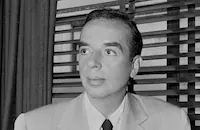
Vincente Minnelli
Cast

Gene Kelly
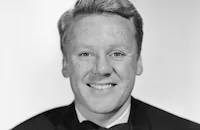
Van Johnson
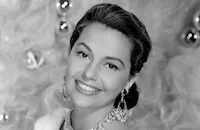
Cyd Charisse

Elaine Stewart
Barry Jones
Hugh Laing

Albert Sharpe
Virginia Bosler
Jimmy Thompson
Tudor Owen
Owen Mcgiveney
Dee Turnell
Dody Heath

Eddie Quillan
Madge Blake
Hugh Boswell
Vesey O'davoren
Colin Kenny
Michael Dugan
John Roy
Bob Stevenson
Pat O'malley
Warren Macgregor
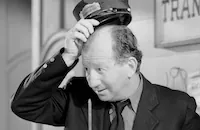
Hank Mann
Mary Boyd
Erin Selwyn
Kathleen O'malley
Sarah Taft
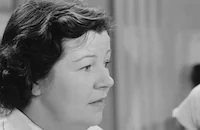
Margaret Bert
Al Ferguson
John Rosser
Ann Roberts
Charles Morton
Betsy Stoddard
Dorothy James
Lorna Jordan
Dennis Ross
Aileen Carlyle
Connie Van
Larry Olsen
Peter Votrian
Linda Gudat
Frances Karath
Oliver Blake
Paul Bryar
Birgit Nielsen
Bette Arlen
Peter Hansen
Rodney Bell
Peter Adams
George Cooper

Peter Leeds
Steve Wayne
Stuart Whitman
Jimmy Cross
Dick Simmons
Archer Macdonald
Roxann Delman
Jeanne Shores
Richard Landry
Gloria Stone
Joan Larkin
Buddy Ross Bryan
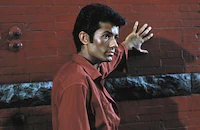
George Chakiris
Gregor Momdjian
Pepe Dechazza
John Gustafson
Ernest Newton
William Reeve
Mack Mclean
Pete Roberts
Richard Beavers
Faith Kruger
Warren Tippie
Ray Linn
Robert Wacker
Anne Marie Biggs
Bonnie Murray
Richard Peel
Dorothy Tennant
Betty Allen
Loulie Jean Norman
Lucile Curtis
Crew
Albert Akst
Preston Ames
Frank Baur
Alvord Eiseman
Adrienne Fazan
Arthur Freed
Ralph George
Cedric Gibbons
Keogh Gleason
Johnny Green
Sydney Guilaroff
Conrad Kahn
William Kaplan
Gene Kelly
Jim Leppert
Alan Jay Lerner
Alan Jay Lerner
Frederick Loewe
Wesley C. Miller
K. D. Iain Murray
Warren Newcombe
Art Pullen
Carol Richards
Joseph Ruttenberg
Conrad Salinger
Irene Sharaff
Robert Tucker
William Tuttle
Edwin B. Willis

Photo Collections
Videos
Movie Clip




Trailer
Hosted Intro
Film Details
Technical Specs

Award Nominations
Set Decoration
Best Costume Design
Best Sound
Articles
TCM Remembers Van Johnson - Important Schedule Change on TCM In Honor To Salute VAN JOHNSON
The new schedule for the evening of Tuesday, December 23rd will be:
8:00 PM In the Good Old Summertime
9:45 PM A Guy Named Joe
12:30 AM Thirty Seconds Over Tokyo
2:30 AM The Last Time I Saw Paris
4:30 AM Thrill of a Romance
Van Johnson (1916-2008)
Van Johnson, the boyish leading man whose clean cut, All-American appeal made him a top box-office draw for MGM during World War II, died on December 12 in Nyack, New York of natural causes. He was 92.
He was born Charles Van Dell Johnson on August 25, 1916, in Newport, Rhode Island. By his own account, his early childhood wasn't a stable one. His mother abandoned him when he was just three and his Swedish-born father offered little consolation or nurturing while he was growing up. Not surprisingly, Johnson found solace in singing and dancing lessons, and throughout his adolescence, he longed for a life in show business. After graduating high school in 1934, he relocated to New York City and was soon performing as a chorus boy on Broadway in shows such as New Faces of 1936 and eventually as an understudy in Rodgers and Hart's musical, Too Many Girls in 1939.
Johnson eventually made his way to Hollywood and landed an unbilled debut in the film version of Too Many Girls (1940). By 1941, he signed a brief contract with Warner Bros., but it only earned him a lead in a "B" programmer Murder in the Big House (1941); his contract soon expired and he was dropped by the studio. Johnson was on his way back to New York, but as luck would have it - in the truest Hollywood sense - friends Lucille Ball and Desi Arnaz introduced him to Billy Grady, a lead talent scout at MGM, which was currently Ball's new studio. Johnson was signed up and almost immediately MGM had a star on its hands.
It might have been slow going at first, with Johnson playing able support in films such as Dr. Gillespie's New Assistant and The War Against Mrs. Hadley (both 1942). By 1943 the studio capitalized on his broad smile and freckles and starred him in two of the studio's biggest hits: A Guy Named Joe and The Human Comedy. Those two films transformed him into a boxoffice draw with a huge following, particularly among teenage girls. A near fatal car accident that same year only accentuated the loyalty of his fans, and his 4-F status as the result of that accident created an opportunity for him when so many other leading actors of the era (James Stewart, Clark Gable) were off to war. Johnson was quickly promoted as MGM'sleading man in war heroics and sweet romancers on the big screen: The White Cliffs of Dover, Thirty Seconds Over Tokyo (both 1944), Thrill of a Romance, the episodic Week-End at the Waldorf (both 1945), and a musical remake of Libeled Lady entitled Easy to Wed (1946).
Hits though these were, it wasn't until after the war that Johnson began to receive more dramatic parts and better material such as supporting Katharine Hepburn and Spencer Tracy in the political farce State of the Union (1948). other significant roles included the well-modulated noir thriller The Scene of the Crime, the grim war spectacle Battleground (both 1949), the moving domestic drama Invitation (1952) in which he played a man who is paid to marry a woman (Dorothy McGuire) by her father. Before he left MGM, he closed his career out in fine form with the sweeping musical Brigadoon, co-starring Gene Kelly and Cyd Charisse; and the lilting soaper The Last Time I Saw Paris (both 1954) with Elizabeth Taylor.
After he left MGM, the parts that came Johnson's way weren't as varied, but he had his moments in The Caine Mutiny (1954), the beguiling romance drama Miracle in the Rain (1956) with Jane Wyman; and his lead performance in one of the first successful made for-TV-movies The Pied Piper of Hamelin (1957). By the '60s, Johnson returned to the stage, and played the title role in London's West End production of The Music Man. He then returned to Broadway in the drama Come on Strong. He still had a few good supporting parts, most notably as Debbie Reynolds' suitor in Norman Lear's scathing satire on marital differences Divorce American Style (1967); and television welcomed his presence on many popular shows in the '70s and '80s such as Maude, Fantasy Island, The Love Boat and of course Murder She Wrote. There was one last graceful cameo in Woody Allen's The Purple Rose of Cairo (1985), yet for the most remainder of his career, Johnson worked mainly on the dinner theater circuit before retiring from showbiz completely by the mid-90s. He is survived by a daughter, Schuyler.
by Michael T. Toole

TCM Remembers Van Johnson - Important Schedule Change on TCM In Honor To Salute VAN JOHNSON
Brigadoon
MGM Producer Arthur Freed bought the rights to Brigadoon for his legendary musical production unit, with Gene Kelly in mind for the lead. The film was delayed by Kelly's other commitments, but production finally began in 1953. Hollywood however, was a different place in 1953 than it had been just a few years earlier, when Freed, Kelly, and director Vincente Minnelli had made their Oscar-winning musical extravaganza, An American in Paris (1951). MGM studio head Louis B. Mayer had been forced out, replaced by Dore Schary, who preferred realistic dramas to fluffy musicals. Television was stealing away movie audiences, studios were economizing, and musicals were no longer popular.
Freed and Minnelli had hoped to shoot Brigadoon (1954) on location. Uncertain weather made Scotland impossible; instead, they found some suitable highlands in Northern California's Big Sur. But even that idea was rejected - the studio insisted that Brigadoon be made on studio soundstages. That was the first strike against it. The second was the studio's decision to use the less-vibrant AnscoColor, instead of Technicolor. And the third, in Minnelli's view, was being forced to use CinemaScope.
On the plus side, he had the services of his American in Paris creative team, including costume designer Irene Sharaff, and art director Preston Ames, along with veteran MGM cinematographer Joseph Ruttenberg. Together, they turned those minuses into pluses. If they had to build Brigadoon on soundstages, Ames devised a way to build the whole village, as well as the surrounding hillsides, on a single, huge stage, so that the camera could wander through it, and shoot a full 360 degrees. Using the muddy AnscoColor to advantage, Ruttenberg lit interiors so that they resembled Flemish paintings. The wide CinemaScope screen is not the best setting for dance, but the large ensemble numbers like "Go Home with Bonnie Jean," filled it well. CinemaScope - as well as Ames's set --were also used to advantage in the "Heather on the Hill" number, as Kelly and Cyd Charisse danced up and down the moors.
Ruttenberg and Minnelli came up with an ingenious solution for the first sight of Brigadoon, which was supposed to emerge from the mist. They shot the scene in reverse, beginning with the village clearly visible, then pumping in chemical fog. Then it was projected backwards, so that the fog clears, revealing the village.
Brigadoon was made for a relatively modest $2.3 million, and was moderately successful at the box office. But critics complained about its stagy quality. Even today, it's obvious that Brigadoon would have benefited from location shooting. Yet its very artificiality heightens the fantasy; and Joseph Ruttenberg's compositions make it a visually striking film. Freed and Minnelli happily worked with Ruttenberg again on Gigi (1958). That film won Ruttenberg his fourth Academy Award - at the age of 69.
Director: Vincente Minnelli
Producer: Arthur Freed
Screenplay: Alan J. Lerner, based on the musical play by Lerner & Frederick Loewe
Editor: Albert Akst
Cinematography: Joseph Ruttenberg
Art Direction: Cedric Gibbons and Preston Ames
Music: Alan J. Lerner & Frederick Loewe
Principal Cast: Gene Kelly (Tommy Albright), Van Johnson (Jeff Douglas), Cyd Charisse (Fiona Campbell), Elaine Stewart (Jane Ashton), Barry Jones (Mr. Lundie), Hugh Laing (Harry Beaton).
C-109m. Letterboxed. Closed captioning.
by Margarita Landazuri
Brigadoon
Brigadoon on DVD
Warners' DVD of Brigadoon is a relatively extras-light single disc edition. I had thought it one of MGM's more popular big-time musicals, but perhaps the general public sees it the same way I do - rather stage-bound and airless.
Synopsis: Tommy Albright and Jeff Douglas (Gene Kelly and Van Johnson) are New York businessmen who get lost on a hunting trip in Scotland. A village called Brigadoon suddenly appears where no village should be and they discover a perplexing bunch of villagers who behave as highlanders did two hundred years before. Tommy falls in love with a local lass named Fiona Campbell (Cyd Charisse) and finally gets the true story from Mr. Lundie (Barry Jones), one of the elders: Thanks to a bargain with God to keep the town untouched by the outside world, Brigadoon sleeps hidden for a hundred years between days, when its inhabitants awaken as if no time at all has passed. Its residents have experienced only two full days since 1754. Tommy needs to choose whether he wants to leave or stay with Fiona. But once a person becomes a citizen of Brigadoon, they must forever remain within its narrow boundaries - anyone who leaves will break the spell, and the village and its people will disappear forever.
Brigadoon has several pretty songs and a couple of fun dance numbers but little to compete with the best of MGM musicals - economics really put the stopper on this one. The real stars of the show are the matte painters and the artists who mounted the immense scenic backdrops that form the backgrounds for the CinemaScope movie. The film doesn't seem to be taking place on a stage, nor does it look anything like reality. What it looks like is a movie set, with breeze-less trees and color-coordinated briars and heather stuck around the ground like Easter decorations. It's not artificial-fake, it's artificial claustrophobic, even when every scene takes place in front of a huge cyclorama.
The concept of Brigadoon, a magical destination for those tired of the chaos of modern life, is pure soft-boiled hooey. A Scot in 1754 is supposed to have made a deal with God to initiate the miracle, yet the completely homogenous population of Brigadoon doesn't seem to have much in the way of Christian influence. The wish to ignore the rest of the world and make one's "perfect" neighborhood last forever is a purely isolationist-reactionary fantasy. It fits the complacent 1950s, just as Lost Horizon's escapist fantasy was a predictable response to the war fears of 1912. Brigadoon has existed for only two days in this isolated state and already it has a dissident, an unhappy jilted suitor named Harry Beaton (played by ballet dancer Hugh Laing) who agonizes about being stuck in an enclosed world that holds no future for him. The rest of Brigadoon, even his own kin, appear to be in denial. Everybody's happy, so Harry must be the problem.
When Harry Beaton tries to escape, Brigadoon becomes a kind of Invasion of the Body Snatchers tale in reverse. Every member of society must think the same way and live the same way. Anyone who cannot conform is dangerous and must be restrained. A convenient 'accident' solves the problem. What's left of Harry is simply ignored so the rest of the evening's entertainment can proceed. The same confusion is at the heart of what's wrong with last year's The Village, which has no music or romance to cover up its contrived story.
Most of the songs go for generic romantic sentiments. Only Almost Like Being In Love and The Heather on the Hill are melodic standouts. Gene Kelly is called on to mostly sing, his weakest talent, while the dances are tasteful but not particularly memorable. Only the Go Home With Bonnie Jean dance develops a communal sense of fun.
Brigadoon has lots of comedy relief but not much of a sense of humor. As Kelly's sidekick, Van Johnson's jabs fall mostly flat. He seems to be around to do little else but shake Gene's romantic mood. Just as in Lost Horizon the hero finds paradise, loses it, and returns to find it again. As is typical of Modern Fantasies of the Convenient Kind, the fantasy rules are always willing to bend for true love, especially when above-the-title talent is concerned. Kelly should have to wait 99 years and eleven months, but the magical town leaps back to life just for him. It's kind of like God telling Adam and Eve, "Come back to the garden, I was just kidding."
Allowing Kelly into the time-capsule community would also seem to be the defeat of the purpose for which Brigadoon was created in the first place. Is modern-man Kelly really going to keep silent when he realizes that Brigadoon's customs, superstitions, and scientific and medical state are one step away from the Dark Ages?
Typical of the loose ends that are left dangling, Van Johnson is abandoned at the edge of Brigadoon without comment. Knowing that the doubting cynic has witnessed a real miracle (ordained by a real God, by the way), wouldn't it be interesting to find out what he would do? I guess not.
They really missed their bet here, plot-wise. The obvious romantic solution would be for Harry Beaton and Tommy Albright to switch places, so each gets what the other wants. Tommy would get his 18th century farm girl. Harry could become a time traveler 200 years into the future, and take Tommy's place in Manhattan with all those spoiled babes. Perfect.
This is an early CinemaScope picture and director Vincente Minnelli uses his crane quite well, especially during the emotional run up that hill with the heather on top. There's also a lot of rapid camera movement through the countryside during the midnight search for poor Harry Beaton. Minnelli does his best but many scenes are static anyway, such as the meeting of the clans amid some old ruins.
Unbilled in the cast are Madge Blake (from TV's Batman) as a town baker. George Chakiris is said to be one of the dancers, while Stuart Whitman is in the New York bar somewhere.
Warners' DVD of Brigadoon is a fine enhanced rendering of the movie that far outclasses the rather badly encoded existing disc, which was one of the very first DVDs released. The Ansco colors look reasonably good but not great. A couple of scenes have a fluctuating density problem, but they last only for a couple of seconds. The audio is terrific.
The extras are some musical outtakes: The songs Come to Me Bend to Me, From This Day On and Sword Dance, and an audio outtake for a fourth song. Sword Dance gives us an opportunity to see Hugh Laing's dancing talent. He looks a little like a more rugged Timothy Dalton.
Along with Seven Brides for Seven Brothers, Brigadoon was filmed in CinemaScope and in flat 1:75, both for theaters that couldn't convert and also as a hedged bet in case the new anamorphic system tanked. In the docu When the Lion Roared Van Johnson tells of making the argument that because he had to film everything twice for two different versions, he should be paid twice! That idea didn't go over very well.
The revived 1:75 version of Seven Brides was quite a revelation on that two-disc set, so I have a feeling that Brigadoon's flat version could not be restored. Either that, or Warners is saving a deluxe release of the movie for a later date.
For more information about Brigadoon, visit Warner Video. To order Brigadoon, go to TCM Shopping.
by Glenn Erickson
Brigadoon on DVD
Quotes
Frank, put it on the bill.- Jeff Douglas
The bill, sir, is very high.- Bartender
So am I!- Jeff Douglas
It's hot in here.- Tommy Albright
It's not the heat, it's the humanity.- Jeff Douglas
I'm highly attracted to you. Why, when I look at you I feel wee tadpoles jumping in my spine.- Meg Brockie
That's about as repulsive an idea as I've heard in years!- Jeff Douglas
Can you think of one good reason why I, a strange man, should be interested in proposing to you, a mighty strange woman and at this hour of the day?- Jeff Douglas
Because you're a lad and I'm a lass!- Meg Brockie
Well, with that philosophy you must have had a provocative career!- Jeff Douglas
Why do you have to lose something to find out what it really means?- Tommy Albright
Trivia
Notes
The order of the onscreen crew credits differs from that of the cutting continuity deposited with the Copyright Office. Also, the onscreen credits identify Adrienne Fazan as the film editor, but the cutting continuity and reviews list Albert Akst as editor. According to a February 26, 1951 Daily Variety news item, British producer J. Arthur Rank had sought the rights to the stage musical. Kathryn Grayson and Alec Guinness were originally to co-star with Gene Kelly, according to a May 12, 1952 Hollywood Reporter news item, and a March 19, 1952 item in Hollywood Reporter's "Rambling Reporter" column noted that David Wayne was under consideration for a role. A March 23, 1952 Los Angeles Times article mentioned Moira Shearer and Donald O'Connor as casting possibilities, and a modern biography of director Vincente Minnelli states that they were considered for the roles of "Fiona Campbell" and "Jeff Douglas," respectively. Minnelli's biography adds that Steve Allen and Bill Hayes were also considered for the role of Jeff. Hollywood Reporter news items add that Michael Maule was originally cast in the role of "Charlie Chisholm Dalrymple," and include Jane Fischer, Keith Hitchcock, May McAvoy and Cosmo Sardo in the cast. The appearance of these actors in the final film has not been confirmed, however. Virginia Bosler, who portrayed "Jean Campbell," was the only member of the original Broadway cast of Brigadoon to repeat her role in the film.
According to pre-production news items and modern sources, M-G-M originally considered shooting the film on location, but Scotland's unpredictable climate and the high cost of overseas production made this unfeasible. In a modern interview, Kelly recalled that he and producer Arthur Freed traveled to Scotland to scout locations, "but the weather was so bad that we had to agree with the studio. So we came back to the United States and started looking for locations here. We found some highlands above Monterey [in Big Sur] that looked like Scotland. But then the studio had an ecomomy wave, and they clamped the lid on that idea." Brigadoon was filmed entirely on M-G-M's lot in Culver City, using painted backgrounds to represent the hills of Scotland. The picture was Minnelli's first CinemaScope production.
Brigadoon opened to mixed reviews. Several critics commented on the omission of various songs from the Broadway musical, most notably "Come to Me, Bend to Me" and the "Sword Dance" number performed by "Harry Beaton." The Saturday Review (of Literature) review praised the director's special technique for enhancing the frenetic atmosphere of the New York bar sequence: "Minnelli has recorded the babble of voices a few frames out of synchronization, making everything sound even madder and more irritating." Brigadoon received Academy Award nominations for Best Art Direction (Color), Best Costume Design (Color) and Best Sound Recording. A modern source credits Carol Haney and Jeanne Coyne as assistant choreographers.

Miscellaneous Notes
Released in United States Summer August 1954
Released in United States 1990
Released in United States 1997
Released in United States 1998
Shown at Los Angeles County Museum of Art (LACMA) as part of program "Twentieth Century Fox and the Golden Age of CinemaScope" July 3 - August 15, 1998.
Released in USA on video.
CinemaScope
Released in United States Summer August 1954
Released in United States 1990 (Shown in Los Angeles (Laemmle) as part of program "MGM Musical Festival" October 26-November 1, 1990.)
Released in United States 1998 (Shown at Los Angeles County Museum of Art (LACMA) as part of program "Twentieth Century Fox and the Golden Age of CinemaScope" July 3 - August 15, 1998.)
Released in United States 1997 (Shown in Los Angeles (Laemmle) as part of program "Makes Great Musicals: A Salute to MGM's Legendary Freed Unit" September 6 - December 21, 1997.)
















